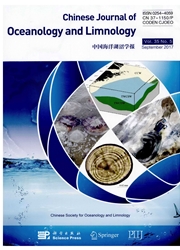

 中文摘要:
中文摘要:
也就是,在低频率的时间领域的由空至海的系统的可变性能被分解成几个系统的气候模式十的可变性( DV )模式, ElNino 南部的摆动( ENSO )模式,年度周期(交流)模式,一年两次的周期( SC )模式和 intraseasonal 可变性( ISV )模式。在 air-seasystem 的这些主要模式的联合安排一个复杂气候系统。多模式在 SST 的低频率的可变性基于 22 一 SST 被调查通过 2003 的从 1982 的记录。在过去的二十年的 SST 的变化在不同区域上经历这些主导的气候模式的不同联合,它基于这些模式的相对重要性导致全球海洋的一个有趣的新分类。新分类能为更好在科学证明意义这些低频率的模式监视提供理想的地点。而且,二个没有年度的变化和 14no-semiannual 变化海洋的点,称为的 annual 和一年两次的 amphidromes,在 AC 是良好的, SC 分阶段执行地图。这些结点的形成在文件结束分析结果被归因于气候模式的 thecouplings。
 英文摘要:
英文摘要:
The variability of the air-sea system in the low-frequency time domain can be decomposed into several systematic climate modes, namely, the decadal variability (DV) mode, the El Nino Southem Oscillation (ENSO) mode, the annual cycle (AC) mode, the semiannual cycle ( SC ) mode and the intraseasonal variability ( ISV ) mode. The combination of these primary modes in the air - sea system orchestrates a complex climate system. The multi-mode low-frequency variability in SST is investigated based on 22 a SST records from 1982 through 2003. The variation of SST in the past two decades undergoes a different combination of these dominant climate modes over different regions, which leads to an interesting new classification of the global ocean based on the relative importance of these modes. The new classification can provide ideal locations for better monitoring of these low-frequency modes in the scientific proof sense. Moreover, two no-annual variation and 14 no-semiannual variation oceanic points, termed annual and semiannual amphidromes, have been well defined in the AC and SC phase maps. The formation of these nodal points is attributed to the couplings of climate modes in EOF analysis results.
 同期刊论文项目
同期刊论文项目
 同项目期刊论文
同项目期刊论文
 期刊信息
期刊信息
